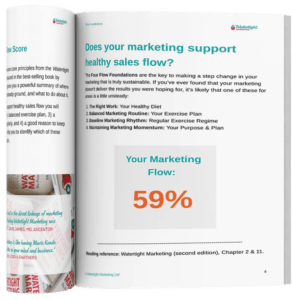Reading Time: 12 Minutes
Many people not in the marketing team have a view that marketing budgets are not always well justified. They can come across as more of a cost rather than being activities from which the business can derive real – even long-term – value. So how do you go about justifying the budget that you feel is necessary to support the business? Who do you need to talk to in order to gain support for it? ~ Rachael Wheatley, Master Practitioner | Watertight Marketing
Listen to the session podcast here
55-minute roundtable discussion on getting buy-in on your marketing budget.
The starting point for our roundtable this month was exploring some key concepts: three budgets, index linking and visual budgeting.
Bryony Thomas, Author and Founder of Watertight Marketing and our host, kicked things off by outlining that there are, in fact, three marketing budgets:
- Investment – for projects such as set-up, fixing leaks and key projects (such as branding) which pay back over 3-5 years;
- In-year – running costs to deliver a plan, often a percentage of target revenue where the pay back is within that year;
- People – where the payback period depends on whether they’re working on investment projects or in-year activities.
There’s a neat metaphor she used here to explain the inter-dependencies of these budgets. You need all three things to reach your destination:
- A vehicle (set-up and strategic projects)
- Fuel (in-year activity)
- A licensed driver (people)
Obviously, you need to know the direction in which you’re travelling. In the Watertight methodology, this is the fourth Flow Foundation which comprises vision, goals and the business plan.
To get there you need a vehicle, fuel and someone to drive. Splitting the budgets out in this way points to the inter-dependency: you won’t get anywhere with only one or two of these components. All three need to be present for you to reach the destination.
Index-link your budget to match the growth you want
Taking the above analogy further, if the Flow Foundations represent directions and a map, the fuel, vehicle and driver, what percentage of targeted revenue growth should a marketer put into their budget to get what level of growth?
Our advice is that the more growth you want (greater distance you want to go or the faster you want to get there), the more fuel you need and the greater the experience of the driver you’ll want.
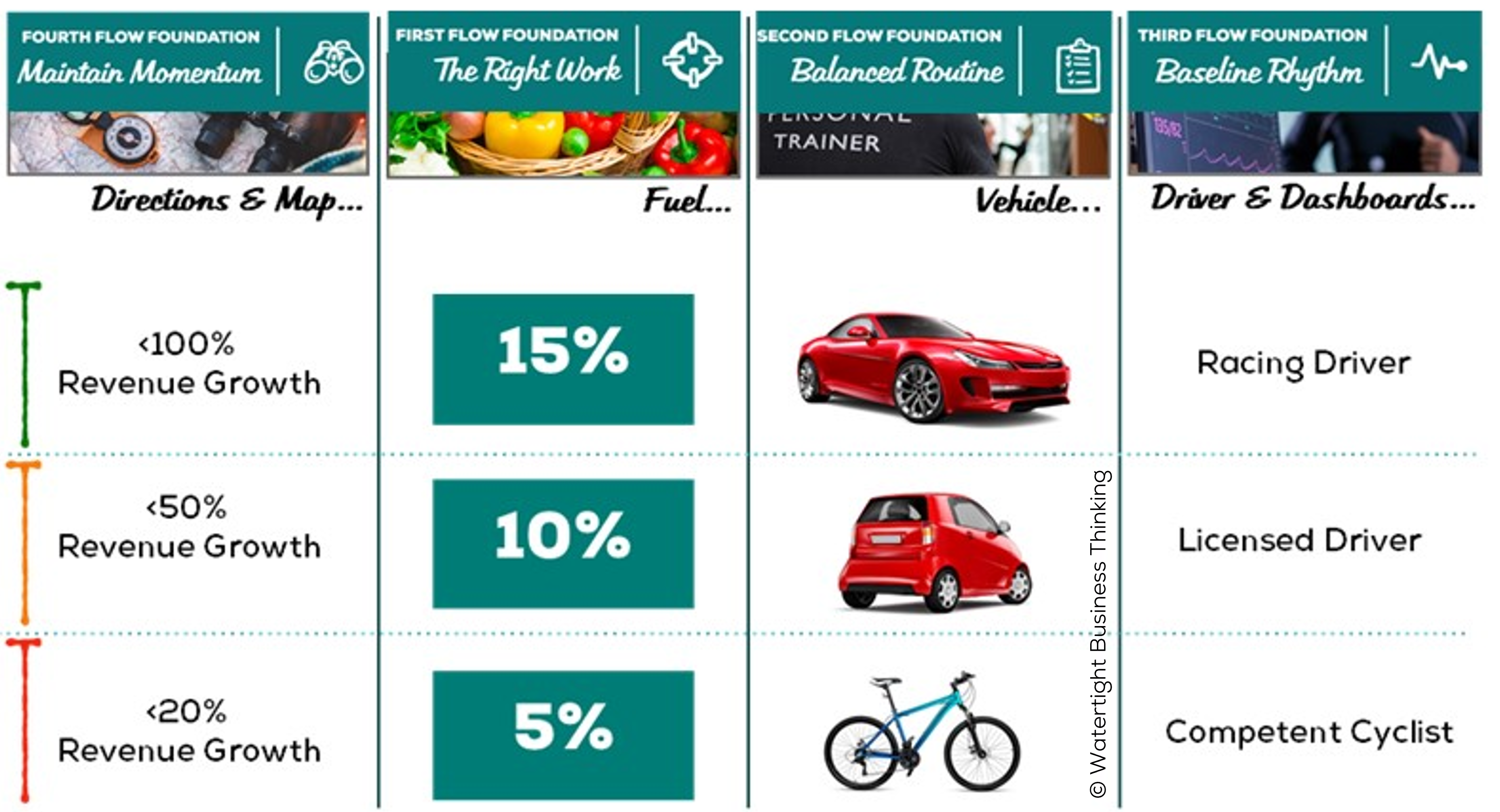
At a targeted growth rate of less then 20%, you’ll need around 5% of that additional revenue to fuel your marketing activities. You can probably run your plan on a bike using a competent cyclist.
At the other end, if you want fast or high growth, you’ll need 15% of that additional revenue as fuel and you’ll be needing a higher spec car and a very experienced, licensed driver.
Bryony also talked about the need for these things to be congruent. If you recruited Lewis Hamilton to ride a bike, he’d get frustrated. Similarly, if you recruited a senior marketer and asked them to deliver significant results without the right set-up, they would soon lose heart and motivation. There’s also no point in hiring a cyclist who only has a bike and expecting them to climb that hill and reach the top as quickly as it would take a sports car.
You get the point! This metaphor can help you to help your colleagues understand the need for all three elements, working together: the right vehicle needs the right fuel and a suitably qualified driver.
The power of turning numbers into visuals
The third concept Bryony talked through was how to visualise your budget and use that to catalyse the conversation and help make reasoned marketing decisions.
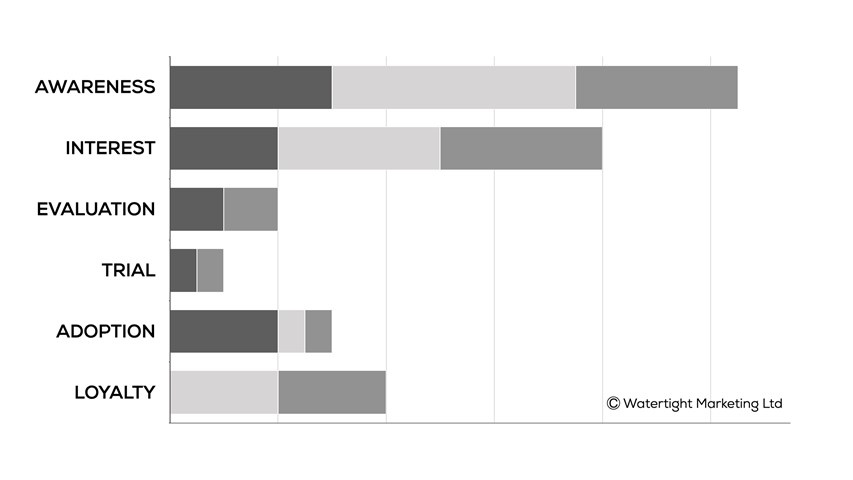
Here, the budget has been split across the customer’s buying journey. You can do this with money or time to see how much of either is being spent at what stage of the journey – and decide whether that’s right. In addition, there are different budget shapes depending on how considered the purchase is. For highly considered purchases, you’ll usually spend along the lines of a ‘ski slope’ – less on building awareness and interest and most on ensuring existing customers are well-loved. At the other end, the shape of a marketing budget for an impulse purchase will be a crescent.
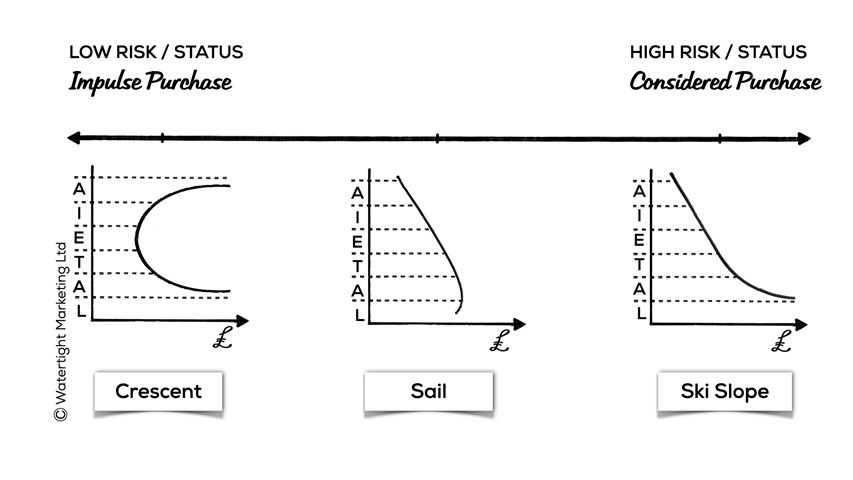
You can look at budget shapes in two ways:
- Reviewing past spend and
- Planning future spend and reviewing at intervals.
Your budget shape in the past may not be the right one for the future. Visualising it catalyses the conversation and helps you make decisions, in consultation with others, as to what is the best way to spend the marketing budget and highlights where money might be better spent in another way.
Using this visual tool helps to make sound marketing decisions
“I’ve found when working with clients that this chapter of the book (Chapter 9) is a real eye opener. People are keen to get things done but sometimes they’re throwing money at the wrong things. Mapping it against the customer journey adds structure and clarity so you can make sure you’re spending in the right place. And, half of my customers don’t talk about money.” Cheryl Crichton, Marketing Consultant.
“You make a good point: lots of marketers are uncomfortable with talking about money. They might not know how to analyse a P&L, they might not understand how to articulate return on marketing investment (ROMI). You need to be ready for these conversations, to get ahead of them and set the agenda so you’re not caught off-guard.” Bryony Thomas.
Visual budgeting can facilitate those conversations about where and how to spend the money and direct resources in a more justifiable way.
“I was working with a financial adviser, a quite highly considered purchase so I was looking for a ski slope shape. I apportioned their planned marketing spend across the whole journey and output the data as a visual chart (as above) which showed that a significant proportion of their budget was being spent on a podcast which they were using mainly to generate awareness and interest. This led to a conversation about how we might achieve the same thing but spend less. The end result was that we equipped the marketing manager to edit and publish it herself, in-house. That money was then released to develop some video case studies that were used to plug a big gap further down the journey.” Rachael Wheatley
There are some good examples of how different marketing techniques, though often used only at one step of the customer’s journey can be used elsewhere too. In this way, you can get more value and return from your marketing spend, both in-year and over the longer term.
“You can also use budget visualisation to interrogate the influence that a marketing activity has across the stages of the customer journey and squeeze even more value out of it by using it more. Take podcasts as an example: I use ours mainly for convince and convert. The same goes for PR; like podcasts or blogs, it’s mainly used at awareness and interest. But you can use PR coverage (an award won, for instance) to share with existing clients. Then they feel good because they’ve chosen an award-winning company and that reassures them. Some techniques are bowling balls and take out many pins. In extending the use of marketing tools, these conversations help you justify your budget.” Bryony Thomas.
“Or you get mis-sold by a Facebook or SEO expert and suddenly three-quarters of your budget is being spent at awareness and you really shouldn’t be spending it there,” Cheryl Crichton adds. “Clients see ads everywhere and think they’ve got to spend money on it, but they’re pouring money into the wrong stage, not where it will really make a difference.”
And so, that opens up a strategic conversation rather than a financial conversation – about marketing value not cost.
Su Copeland, Marketing Consultant added another example. “What is the purpose of your website in your customer journey? I had this conversation with someone yesterday. I said it’s not going to generate any leads yet because no-one is finding it. So don’t spend loads of money on the website. Just make sure it’s simple and supports their decision-making process. You can look at doing clever things with it later.”
“It’s fascinating. Take a technique like blogging. Our blog has been going for 10 years. There are a few key performing posts that are evergreen, they keep on bringing traffic. We also dig into the archive and on almost every sales conversation will follow up afterwards with a post. So, if I were thinking about return on marketing investment, if you account for the time or money you spend on each blog post, I might say 50% of the time gives in-year return. And 50% of it is over the next three years. You can start to apportion ROMI in that way.” Bryony Thomas.
“Yes, you’d amortise the cost of a computer over a number of years, so why wouldn’t you do the same for some marketing spend which delivers value over a longer time period?” Su Copeland added.
“People seem to get lost with lead generation. It’s all about creating leads. But all the things we’ve been talking about – blogs, websites, other content – they can be used much more cost-effectively. Looking at it through the full journey can make such a difference.” Michelle Hayman, Marketing Consultant
“If you run a workshop, bring in others to the conversation, you can ask for views about how to distribute your 100% across that journey and ask what jobs the marketing is doing. People round the table then start thinking how they could use that marketing in other ways and get more bang for their buck. Or they say: I’ve never used that, ever. So, you switch it off and save the money.” Bryony Thomas.
These nuances to marketing budgeting radically change the conversation: it becomes not about only what you’re doing but helping to explain why you’re doing it.
Splitting the budget across multiple journeys doesn’t work
My experience of being asked to use one budget for many different customer journeys meant that the money was not being used effectively and made it hard to demonstrate much return.
“I remember working for a law firm and they had multiple practice areas, offices and sector groups, all of whom wanted a share of the marketing budget. For it to be effective or to have any impact was a real challenge. When they focused on a few areas instead we could think creatively about how we could support other areas that weren’t in focus with marketing tools and resources that didn’t cost anything more than time.” Rachael Wheatley.
“The interesting thing to draw out there, is that each journey can have a different budget shape”, Bryony continued. “So, the first thing to do as a marketer is to look at how many decision journeys there are that need to be supported by marketing. You can have employee decision journeys or resellers as well as customers. We might have a journey to become a Watertight practitioner, a transformation client, to buy our apprentice training package, to join our Make Marketing Happen Club. They’re all different. We had a client who we were chatting to recently and we got to 94 different journeys they were trying to support with one marketing plan. No wonder it’s not working!”
The key point here, then, is to map out all the journeys and decide to focus on a very few.
Know your numbers
Chris Turner, Marketing Consultant came in at this point to talk about the importance of both numeracy and having these conversations regularly. “If you’re having this conversation once a year, you’ve already lost, right? Your business is looking at its resources, probably formally once a year, for sure. But you need maybe quarterly reviews throughout the year. And the whole idea of being numerate and understanding the tools and the contribution marketing is making is about being able to justify a resource allocation.”
He continued the thought. ”You want to take the conversation away from cost and towards value. Frame it so that it links business objectives for the year and how marketing is going to help support them. This budgeting chapter really helps people understand how to allocate and justify marketing resources in a way that everyone can understand, that helps you point to a what marketing spend is going to do, how it will contribute to achieving those business goals over what time period.”
“Chris makes a good point about on-going review. I’ve had instances where budget has been lost because it hasn’t been spent or we’ve saved it for later in the year, but because it hasn’t been accrued it’s been taken out of the budget.” Michelle Hayman, Marketing Consultant
“I always tracked my budget myself, rather than rely on finance. It’s worth being on top of this, tracking the actual spend so you know exactly where you are, each month.” Bryony Thomas.
People are important in budgeting conversations too
James Barrass-Banks, Institute of Occupational Medicine came into the discussion then to make a pertinent point about how you might get stakeholders on board. “Often what we’re trying to do is convince these human people to take action. Therefore, we want to understand our audience. What are their pain points? What are they trying to achieve? In terms of getting buy-in to budget, it’s about sitting down with the people individually and asking about where they want to get to, what’s stressing them out? And how can I solve those problems? If the budget is framed in that way, they’re going to fight for it, because they know that it’s going to help solve their problems. You’re getting their emotional support, then. I believe that you should be constantly talking to your stakeholders about what’s stressing them out and how can you help. Because there are marketing solutions to remove those frustrations.”
“That’s so important,” Bryony Thomas added. “It links back to February’s session where we talked a lot about the first audience to understand is internal. And what you’re there to do is to convince them of marketing, help them to understand where it fits in to their world and why they need it. The language we use to do that needs to match that of the person we’re speaking to. Talk in numbers to the finance director. The HR director might want to talk in terms of well-being.”
“And of course, marketing doesn’t have a monopoly on creativity. Budget in some fun projects that motivates and excites people. It’s good to set aside some money for those ideas and make them happen. It’s another way of getting emotional buy-in to your budget.” James Barrass-Banks
“I’d say the budget set aside for fun projects could be as much as 10%. What James talks about could be sensibly discussed using the showcase quadrant of the Purpose Profit Matrix (Chapter 11), the stuff that brings us joy. The work with clients that’s fun, that takes the business forward, is energising but isn’t all about money.” Bryony Thomas.
Watertight Wisdom
What’s worked for us
Ideas from the group about how to get buy-in for your marketing budget.
- Use the three budgets model to clearly articulate the why of marketing spend. Investment/set-up (the vehicle), running costs in-year (fuel) and people (the driver).
- Justify your budget. Extend the analogy to justify the percentage of revenue growth you need to achieve that growth – think: a different, faster vehicle or more experienced driver to achieve greater growth.
- Know your numbers. Get familiar with and comfortable talking about money, return on investment that marketing makes, revenue growth and what percentage of that your marketing budget needs to be to achieve business goals.
- Get ahead of the budget conversation – make it your agenda, show where and why you’re planning to spend the marketing pounds.
- First map all the customer journeys you have and choose a few to focus your budget on.
- Use visual budgeting to increase cost-effectiveness and impact. It helps to see how you can extend the use of the marketing you put in place and shows where money is best spent.
- Refer to budget shapes to facilitate a discussion about how best to spend the money and whether you’re supporting the customer journey in the most effective way.
- Talk to people. Engage stakeholders in conversations about how you can help achieve their goals which in turn gains their support for your budget. Run workshops to decide how to apportion spend across a decision journey. Budget discussions help you point to why you’re putting in place the plan and how best to use the resources you have.
What would you add to our list?
We’d love to know what’s worked for you in getting buy-in to your marketing budget. Do add a comment below.
And if you fancy joining our next #WatertightWednesday round table marketing discussion, you can sign up here.
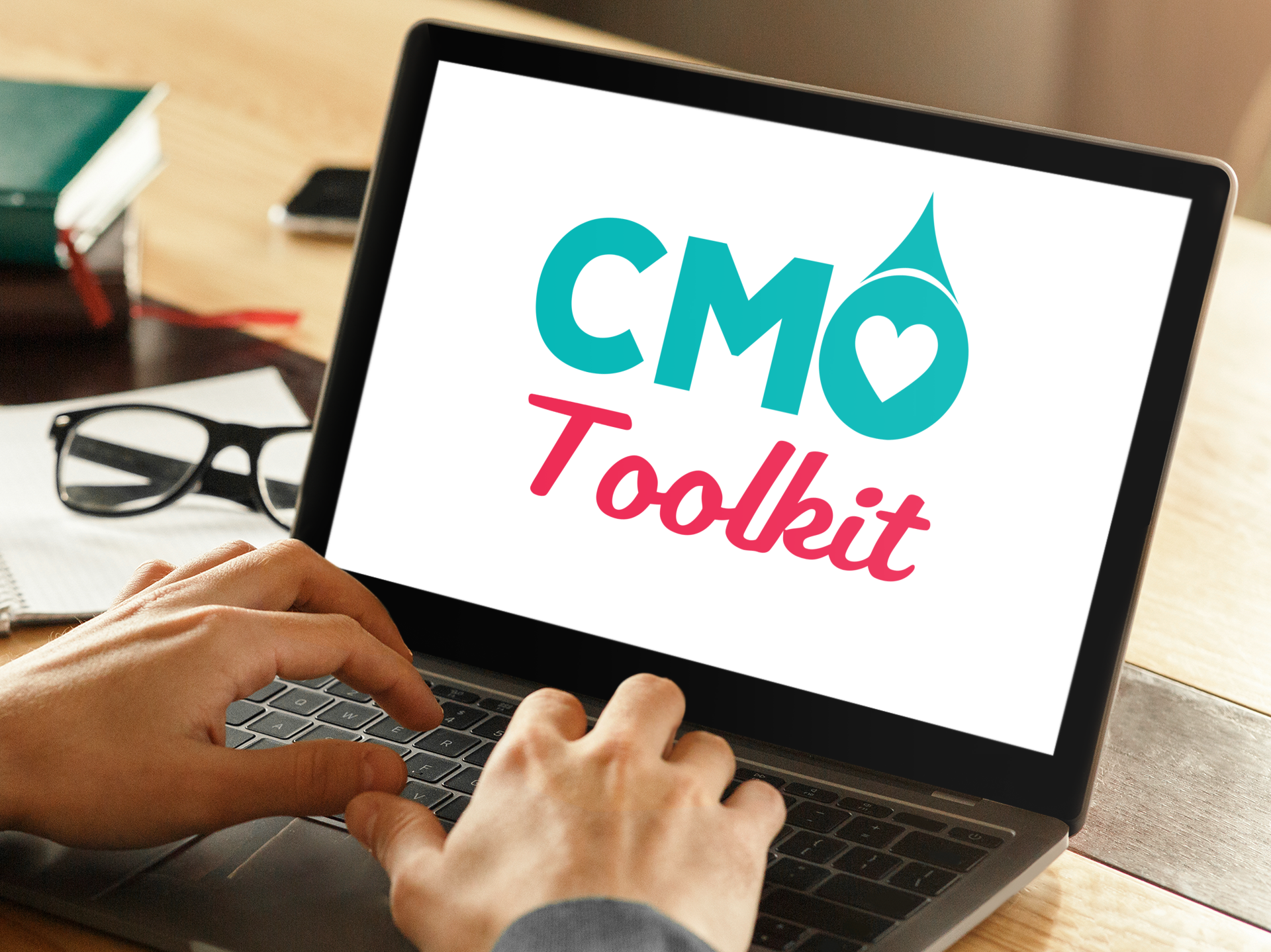
Subscribe to the CMO Toolkit
Would you like to get your hands on the tools, frameworks, templates, workshop packs, slides, and analysis tools we use with our clients? It’s all waiting for you.

Rachael Wheatley
Managing Director, Watertight Thinking
Rachael brings over 30 years’ of marketing experience, with a particular focus on building and developing effective marketing teams that are able to act as a strategic driving force across an organisation. She has worked with Watertight since 2014 as a Master Practitioner and joined the business as MD in 2022.



